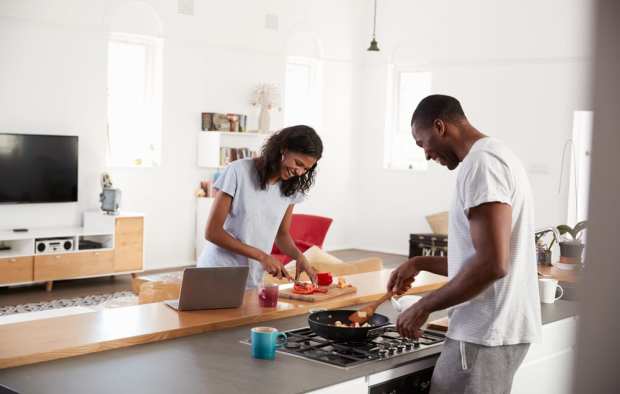Creating Cookware For A Generation That Doesn’t Cook

Do millennials cook?
It’s a question that has come up in popular media in a variety of ways over the last several years — and the answer is harder to suss out than one might assume. One study indicates that the answer is not really — millennials cook two fewer meals per week than their baby boomer counterparts and choose pre-packaged/pre-prepared foods 18 percent of the time, compared to 5 percent for baby boomers. They are also 15 percent less likely to think they are good or proficient cooks and far less likely to report they are confident in their ability to prepare an over-easy egg or a roast chicken than any other living generation.
Another study, this one from the USDA, draws similar conclusions more starkly — millennials buy fewer groceries that other generations and eat out more often.
“The clear, overarching trend with millennials is that spending on groceries is down, and spending on food outside the home is up,” the reported noted.
And, even when they buy groceries, they shy away from things that require a lot of preparation.
“Millennials allocate the highest budget shares to prepared foods, sugar and sweets, and pasta but the least to grains. The first three categories all require minimal preparation for consumption,” the study notes.
But the data is a bit more complicated that this. When millennials renovate their homes, kitchens lead their efforts, and they spend more on those renovations. According to a 2016 study by the National Kitchen & Bath Association, millennials outspent the $19,155 typically invested in a kitchen remodel by other age groups by 17.7 percent. Millennials, according to the above mentioned survey, also spend more time watching cooking shows than any other generation.
So if millennials don’t cook today, which there is some evidence to say they don’t, they at least take an interest in preparing food.
And it is that intersection point of interest perhaps not being acted on that Austin-based Made In hopes to step in to make a difference in motivating an up-and-coming generation of home chefs toward the stove and away from the microwave. The cookware startup announced today (April 3) that it has closed a $5 million seed funding round, led by Bonobos Founder Brian Spaly.
“Made In is built on the idea that better cookware makes better food,” the firm’s co-founder and president noted in a video on the Made In website, saying the company carries that belief through its entire process, from manufacturing and packaging to sales. As a result, the cookware is more or less manufactured here in the U.S. — by a third-generation manufacturer based in the Southeastern U.S. The pans come with graffiti-styled labels on the bottom and plantable paper tags embedded with basil seeds. The knives ship with a brightly colored Band-Aid in the box — making it the most cheerful warning about sharpness on the market today.
The design of the pans themselves are familiar to anyone who has ever seen a set of All-Clad’s line of pots and pans. Pots and pans are made with five layers of aluminum and steel, much like All-Clad’s D5 line. That choice was intentional by the founders — as their early polling of chefs indicated that at the end of the day, it was the type and design that seemed to get the highest loyalty rating.
Prices start at $59 for the 8-inch frying pan and range up to $779 for a 15-piece Executive Chef package. By comparison, All-Clad’s D5 15-piece set will run consumers roughly $1,300 to $1,600, depending on where they happen to buy their set. It is not a bargain-basement price for a pot and pan set, as a bargain shopper can find a 15-piece stainless steel cooking set for less than $200, and if stainless steel is not a sticking point then the prices go down from there.
But the products, according to the founders, are not designed for consumers looking for the lowest price point on pots and pans — but for the millennial customer transitioning into a more domestic life phase and willing to invest a good set of pots and pans to elevate their meal experiences. That customer may not have over $1,000 to invest in pots and pans, but is still looking to purchase something more lasting than a $100 set.
And, thus far, it is an idea that is attracting a following both from investors who are taking interest and from consumers who are coming along. The brand grew 11.6 percent in 2018 and its founders predict similar growth for 2018.
“When I started Bonobos, I could have dressed you in Banana Republic and you would have looked great,” said new investor Brian Spaly, reported Bloomberg. “But there were hundreds of these stores, and it’s not exciting. It’s the same with All-Clad, it’s not that exciting or fun, and that’s how we’ll compete.”
